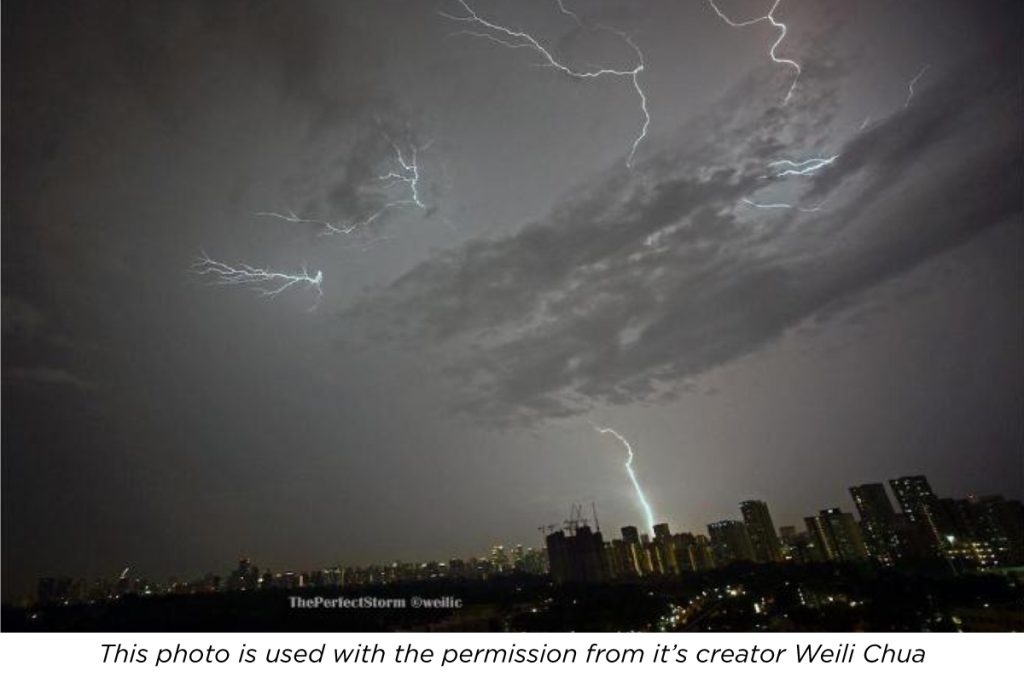Lightning Risk Assessment & Protection
Singapore, being at the Equator, faces frequent lightning with about 167 thunderstorms every year.
This leads to potential dangers like fires, building damage, and economic losses. Lightning strikes can harm cultural sites and disrupt vital services, even causing injuries or loss of life. To prevent such risks, it’s crucial for property owners and event planners to regularly assess and minimize lightning dangers. This ensures safety and protects against damage to structures and valuable heritage, as well as prevents disruptions to essential services.
Assessing the risk of lightning strikes to a building or open area is crucial for safety. By considering factors like the size of the area, local geography, exposure time, and the frequency of lightning, a Lightning Risk Assessment helps identify potential dangers.
The assessment compares these risks with acceptable levels to decide if extra protection is needed. A lightning protection system becomes a vital part of a building and its electrical setup, minimizing damage, disruptions, and injuries. The Singapore Standard SS 555 2010, known as the Code of Practice for Protection against Lightning, guides the practice of Lightning Risk Assessment. Following this standard ensures proper protection measures are chosen based on the level of risk, enhancing overall safety.
The Singapore Building Control Regulations require buildings and their occupants to be protected from the direct effects of lightning strikes and the risk of lightning discharges through the building. The Building and Construction Authority (BCA) of Singapore requires all buildings to comply to SS 555 before occupation permits are awarded.
A building may not need to suffer a lightning strike to suffer damage or disruptions. Thunderstorm events can induce indirect effects that may cause nuisance tripping of critical processes. We can conduct investigations to Lightning-induced effects and recommend measures to enhance your system resilience. System resilience can be significantly improved by the proper applications and selection of lightning surge arresters under IEC 61643.
We provide consultation services to conduct Lightning Risk Assessment and the respective design of the Lightning Protection System based to SS 555 and the international standards IEC 62305 and IEC 61643.
We are also able to conduct the following Regular Inspections on existing the lightning protection system, in accordance to SS 555:
- Continuity test of LPS
- Earth Resistance Test of Earth Termination System
- Inspection of horizontal conductors, vertical conductors, earth pits and saddles
- Inspection of Equipotential Bonding
- Inspection on bonding conductors and connections
- Inspection to ensure separation distance are maintained.
- Checks on the security of supports and attachments of LPS components
- Inspection and testing of Surge Protection Devices
The following video demonstrates the process of determining whether parts of a facility are covered by the Zones of Protection provided by installed Lightning Protection System, using the Rolling Sphere Method enhanced by 3D modelling and first-person walkthrough simulation. Through this process building owners can determine further enhancements required to their Lightning Protection System.
If you are a building owner or event organizer who is keen to assess the lightning risks of properties or events under your charge or investigate suspected lightning-induced incidents, please do contact Er. Ho See Fong at 92738900.


